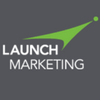Six Essential Marketing Pillars for HealthTech Startups
An effective marketing strategy and actionable marketing plan are foundational to promoting a business, reaching a target audience and generating revenue. For healthtech startups, those components are especially important. But many startups and entrepreneurs don’t know where to start to lay the groundwork for strong, impactful marketing.
Austin is the place to go for innovative startups. It is important that startup founders have a sound understanding of fundamental marketing elements. This is crucial for a new company, especially one launching a new product or service. As the healthtech industry continues to grow, these essential marketing pillars are critical to ensuring startups and their product, service or solution is on the right path.
1. Strategy
The first and one of the most important marketing pillars is a marketing strategy. Thoughtful strategy guides all successful marketing initiatives. There are many components of an effective strategy, but it is key for healthtech startups to start by evaluating the product or service and its value and position in the market. Analyzing what problems the offering solves and for whom it serves is essential to defining business goals and developing a marketing strategy. A good marketing strategy is always driven by business goals.
2. Messaging
Messaging conveys your offering to potential buyers. Impactful messaging directed at the most relevant target audiences generates interest and leads. Messaging should be revisited regularly and modified to reflect industry, market and product shifts. Outdated messaging can create a negative perception for potential buyers. Alignment with the marketing strategy is also critical. If the strategy and messaging are not aligned, there can be a disconnect in communications such as marketing content and campaigns. Ensure all team members are clear on messaging points. As a startup, it might only be a few individuals, but consistency results in more effective marketing efforts. To reevaluate or revamp messaging, collect feedback from customers, prospects and team members. Feedback from these sources can provide insight into current messaging and guidance on how to change it moving forward.
3. Branding
A brand tells a story and as a startup, it is important for audiences to get to know your brand. The look and feel of the brand should create an emotional connection. People identify most with brands that are authentic and trustworthy. A brand can also influence how prospects feel throughout the buyer’s journey. When prospects in the awareness stage come across your website, you want what they see to resonate with them. They will remember certain content or pages when they move to the consideration stage and start to evaluate purchase options. Like messaging, a brand should consistently be presented across all marketing channels. Doing so can increase revenue by up to 23%. With healthtech being a fast-growing industry and becoming more recognized, it is important to differentiate your brand from other competitors.
4. Lead Generation
Lead generation is essential to growing a business. But before generating leads, you have to guide prospects through a buyer’s journey, which consists of several steps. The first three focus on lead generation. In the first stage of awareness, someone realizes they are dealing with a problem that needs solving. Moving into the consideration stage, prospects start researching options to solve their problems and pain points. The consideration stage is when a prospect becomes a lead. Interactions at this stage are very important. Providing prospects with relevant and useful content can keep your company top of mind while they consider their options.
5. Content Strategy
A content strategy is the planned distribution of content through marketing channels. This includes a variety of assets like eBooks, blogs, webinars and infographics. Content drives many marketing activities and should be a top focus. The buyer’s journey fuels much of a content strategy, helping guide what content is delivered and when. In the awareness stage, leads want to identify their issues and consider how to solve them, so it would be most useful for them to read a blog or look at an infographic. As they move to the consideration stage, an eBook or white paper with more detailed information about your solution is helpful and will move them closer to purchase. As a startup, putting a content strategy together to support lead generation might seem like a huge task to take on, but starting with key content fundamentals and building from there does the trick.
6. Marketing Automation & Technology
From maintaining sales and marketing alignment to improving the efficiency of operations, marketing automation can help streamline and strengthen marketing. Lead management is one area where automation can be helpful. Automation tools also analyze data from marketing campaigns and move a lead down the sales funnel in an automated fashion. Email marketing, content distribution and personalization can be implemented and managed with marketing automation tools. While marketing automation might be something to consider after generating sales and momentum, for most healthtech startups, it is useful in the long-term.
In the emerging world of startups, there is a lot that goes on and at times can feel challenging to achieve success. With strong marketing and a clear understanding of these key pillars, the sky is the limit.
